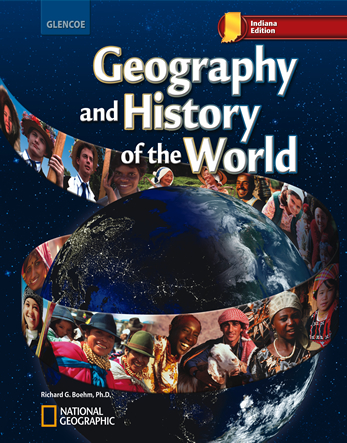

Geography and History of the World © 2010 Indiana EditionChapter 27: Cultural Geography of East AsiaChapter OverviewsEast Asia is a region with stark contrasts between highly industrialized countries, heavily urbanized areas, poor rural areas, and largely unpopulated mountains and deserts. China is the cultural cradle of the region and today is the country with the largest population and size. Communism dominates in North Korea and China, where the standard of living, health care, and education lag behind that of Japan, Taiwan, and South Korea.China About 92 percent of China’s population are Han Chinese. Most Taiwanese are descended from Chinese migrants, and most Mongolians are ethnic Mongolians. Population density varies throughout the subregion. China is home to one of the world’s earliest culture hearths. The Chinese spread across the North China Plain, and formed a series of dynastic governments. Europeans arrived in the 1600s, and during the 1800s set up spheres of influence. China endured a series of revolutions, and world wars until a Communist government was set up. Nationalists fled to Taiwan. Mongolia became a communist state under soviet influence. Today China’s government is opening up to free market influences. The subregions culture is influenced by Confucianism, Buddhism, and communism. Japan The population of Japan is ethnically homogeneous, with a small number of aboriginal people in the north. Most of the population is crowded into the Tōkaidō corridor. Japan is one of the most heavily urbanized countries in the world. Japan’s early history was heavily influenced by China and Korea. In the 400 Japan united, in 1192, Japan was ruled under its first shogun supported by samurai. In the 1500s Europeans made contact with Japan, but were restricted to a few ports. In the 1800s the U.S. opened Japan for trade. During the late 1800s Japan transformed into an industrial country and built an empire, which it lost in World War II. Today Japan is economically powerful, and has a fully functioning democracy. Japan has its own unique art forms such as origami and haiku poetry. Many people practice both Buddhism and Shintoism. North Korea and South Korea Korea is ethnically homogeneous tracing their origins to people from northern China and central Asia. Most of the population inhabits coastal plains. South Korea is much more densely populated than North Korea. Much of the history of the Koreas is tied to China. Beginning around 1200 B.C. Chinese settlers brought their culture to the subregion. Mongolia, China, and Japan have all laid claim to Korea throughout its history. In response Korea adopted an isolationist policy. After Japan annexed Korea in 1910, and lost it after World War II, Korea was divided into Communist-ruled North Korea, and U.S.-backed South Korea. North Korea invaded in 1950, and the war ended in a stalemate, with both sides agreeing to today’s borders. North Korea remains under Communist control, while South Korea has a democratic government. Korean life is influenced by Confucianism, Buddhism, Christianity, and in North Korea, communism. |  |















